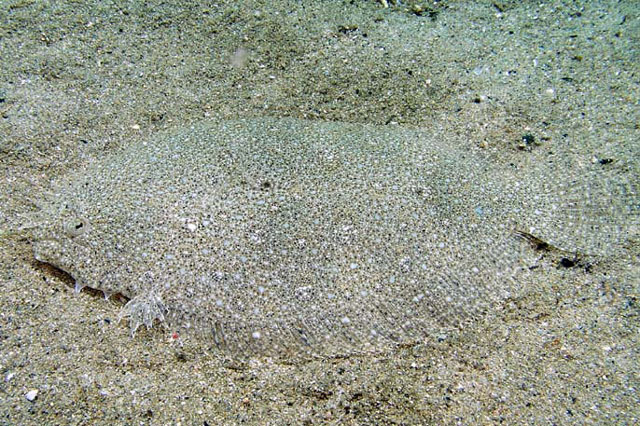| Paralichthyidae (Large-tooth flounders) |
| 45 cm TL (male/unsexed) |
|
demersal; brackish; marine; depth range 0 - 200 m, oceanodromous |
| Indo-West Pacific: Persian Gulf and east coast of Africa (south to Algoa Bay and perhaps to Knysna, South Africa) to Fiji, north to southern Japan, south to the northern coast of Australia. |
|
Dorsal spines (total): 0-0; Dorsal soft rays (total): 71-84; Anal spines: 0-0; Anal soft rays: 53-62; Vertebrae: 36-36. Some pairs of moderately large canines in anterior part of both jaws, 6 to 13 lateral teeth in lower jaw, stronger and more widely spaced than those of upper jaw. Gill rakers pointed, longer than broad. Soft ray count of pectoral fin refers to that on ocular side (Ref 9774). |
| Found in shallow waters and estuaries, on mud and sand bottoms, to depths of 200 m (Ref. 30573). Juveniles common in brackish water (Ref. 9774). Feeds on benthic animals (Ref. 5213). Mainly sold fresh (Ref. 9774). |
|
Least Concern (LC); Date assessed: 10 March 2021 Ref. (130435)
|
| harmless |
|
Known from the South China Sea in the Hainan, Guangxi, and Guangdong provinces and the East China Sea in Zhoushan Islands, Zhengjiang Province (Ref. 33837). Also Ref. 4900. |
Source and more info: www.fishbase.org. For personal, classroom, and other internal use only. Not for publication.

